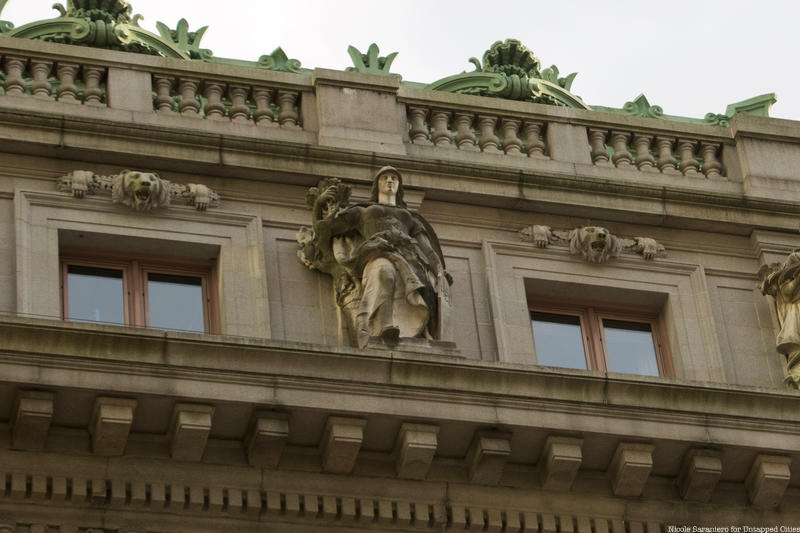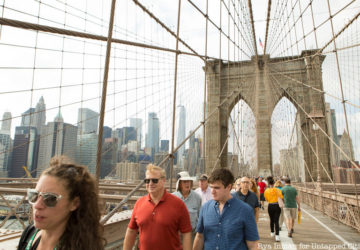3. A German Statue was Made Belgian After WWI

The outside of the museum is adorned with sculptures created by artist from all over the world. The four large sculptures that flank the main staircase were designed by Daniel Chester French who is known for his work on the Lincoln Memorial in Washington, D.C. These four figures represent the four continents of Asia, America, Europe and Africa.
A series of smaller statues line the top of the front facade and were created by various artists to represent the twelve commercial centers of the ancient and modern worlds. Among the ranks are representations of Greece, Rome, Venice, Spain, England, France, and Belgium. Belgium may seem out of place on this list since the original subject of the sculpture was Germany. When attitudes towards Germany turned cold during World War I, the statue, third in from the right, was ordered to be changed.
The original sculptor was German-American Albert Jaegers. His design was of a female figure draped with chain mail and a leather doublet embossed with the imperial eagle of Germany. She was resting on a shield bearing “W II” for Kaiser Wilhelm II. When changes were requested in 1918, Jeaggers suggested just putting the statue in storage. Architect Cass Gilbert called upon sculptor Attillio Piccirilli – whose family had carved French’s “Four Continents” – to carry out the necessary changes. Piccirilli replaced the German eagle with a lion in a simplified version of the coat of arms of Belgium, replaced the Kaiser’s monogram with “Belgium” and altered the figure’s helmet.





